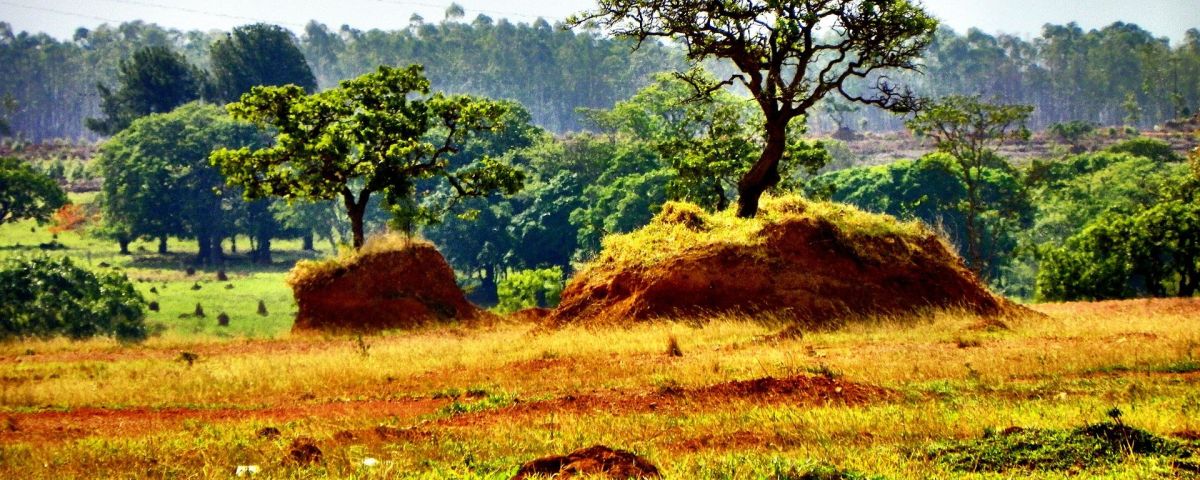Shortlisted for the 2023 Southwood Prize
In this blog post, Natashi Pilon discusses their team’s analysis of 82 data sets from the literature and primary data collection, with the aim of assessing the effectiveness of passive and active restoration techniques applied in Cerrado open ecosystems.
Restoration
We are in the UN Decade on Ecosystem Restoration, and the consensus is stronger than ever that conservation is necessary but not sufficient to protect biodiversity and guarantee the delivery of vital ecosystem services; restoration is needed. However, how successful are we in restoring ecosystems? How close can our techniques reach to pristine sites?
Answering these questions was the primary objective of our paper, focusing on the most diverse savanna in the world – the Brazilian Cerrado. In the last decade, several techniques have emerged for savanna restoration, and aiming to create guidelines for the Decade on Ecosystem Restoration, we assessed them by comparing them with conserved areas. We tested the success of both active methods (introduction of plants, underground structures, and seeds) and passive restoration (natural regeneration).
Findings
To our surprise, none of the assessed techniques was able to fully recover the diversity and complexity of growth forms seen in conserved areas. We are far from restoring the diversity and functioning of savannas. The cheapest and most widely used technique, natural regeneration, has limited potential, relying mostly on the underground structures remaining in the soil after degradation and not increasing over time, indicating the low colonization potential of native species, stressing the need for active introduction of propagules in almost all cases.

But all is not lost; we also found that different techniques have the potential to recover a piece of this puzzle. This means that, instead of searching for a panacea, we should combine different restoration approaches and join efforts to improve restoration success.
Next steps
The next step for this field is to design restoration models in different scenarios of degradation, considering a combination of approaches to better instruct stakeholders and people working on the front line to make the UN Decade on Ecosystem Restoration meaningful. Tropical open ecosystems, such as savannas and grasslands around the world, are the most overlooked and threatened ecosystems, frequently subjected to restoration actions based only on tree planting.

In our paper, we demonstrated that tree planting is the least effective restoration method for these ecosystems, and the best approaches are based on seeds or transplanting plants from conserved areas. Thus, as science continues to search for solutions to restore these ecosystems, and the best restoration approaches require pristine sites as propagules sources, the conservation of natural remnants must be the top priority.
About the author
My childhood was spent in the countryside of Brazil, far from big cities, where I used to walk in forest remnants (some of which have already disappeared) with my father and grandfather while they taught me the popular names of different plant species. All the savanna patches in the region were converted to crops. I remember my grandfather regretting not finding specific fruits that could only be found in Cerrado vegetation during his childhood. So, indirectly, I became involved with ecology from a young age.

My first contact with applied ecology as a science was during the first year of undergraduate studies in Biology when I started an internship to evaluate the growth and phenology of planted Cerrado species. Since then, studying how ecosystems operate and linking this knowledge to conserve and protect them has become my life mission, specifically focusing on neglected tropical open ecosystems.
It has not been easy to be a scientist in Brazil in the last five years; we have experienced several cuts in the science budget and a reduction in university jobs. During the pandemic, these challenges considerably intensified, and I almost had to leave science and find other work by the end of my PhD in 2020. However, with persistence and resilience, things have improved!

Since the paper was published in Journal of Applied Ecology, many things have changed. At that time, I was working as a post-doc and, by the end of the last year, I started a new position as an associate professor at the University of Campinas (Unicamp) (a dream job for me!). Now, I’m researching and teaching Applied Ecology in undergraduate and graduate courses. As a research focus, I’m investigating Cerrado’s open ecosystems more deeply and the changes in biodiversity and ecosystem services along gradients of environmental conditions and degradation to link them to different restoration and conservation strategies.
Finally, I would like to stress to my research colleagues working on ecology that no matter how fundamental our questions are, in this historical moment of steep decline in biodiversity, all ecological knowledge becomes applicable to conservation and management; let’s translate it to the world outside academia!
Read the full article “Challenges and directions for open ecosystems biodiversity restoration: An overview of the techniques applied for Cerrado” in Journal of Applied Ecology.
Find the other early career researchers and their articles that have been shortlisted for the 2023 Southwood Prize here!


